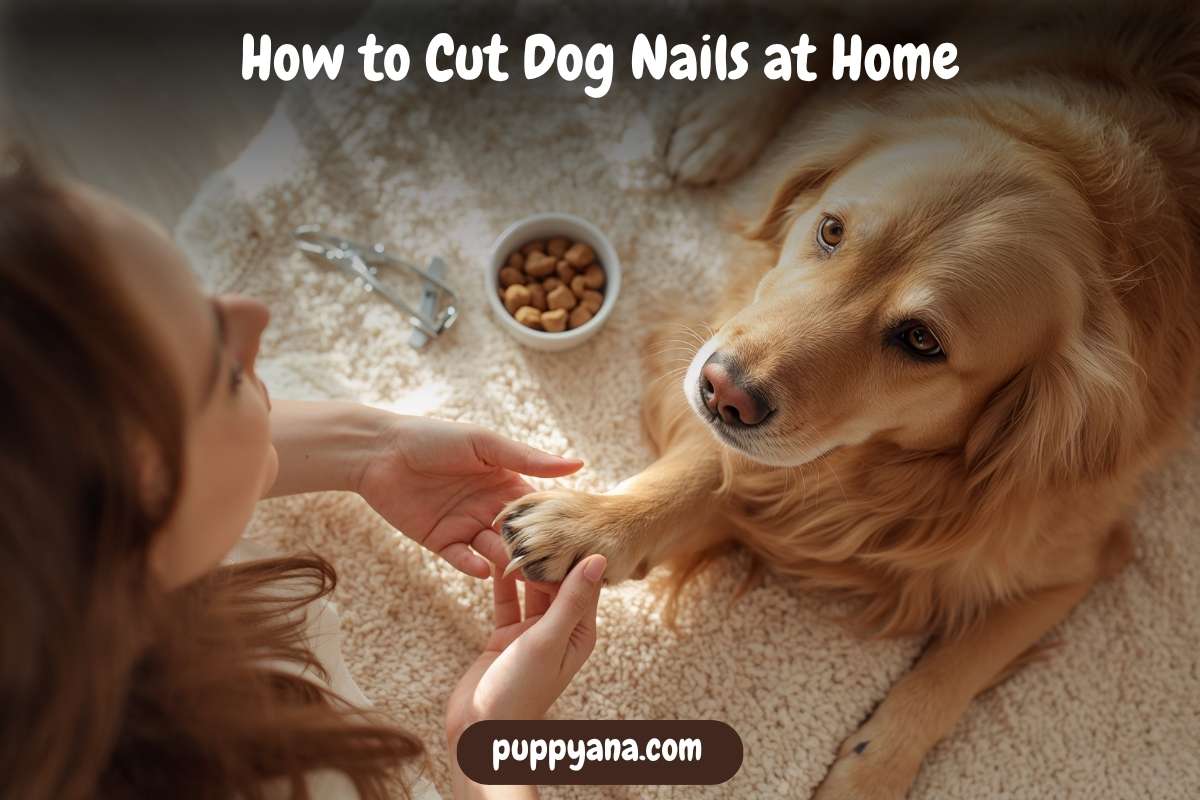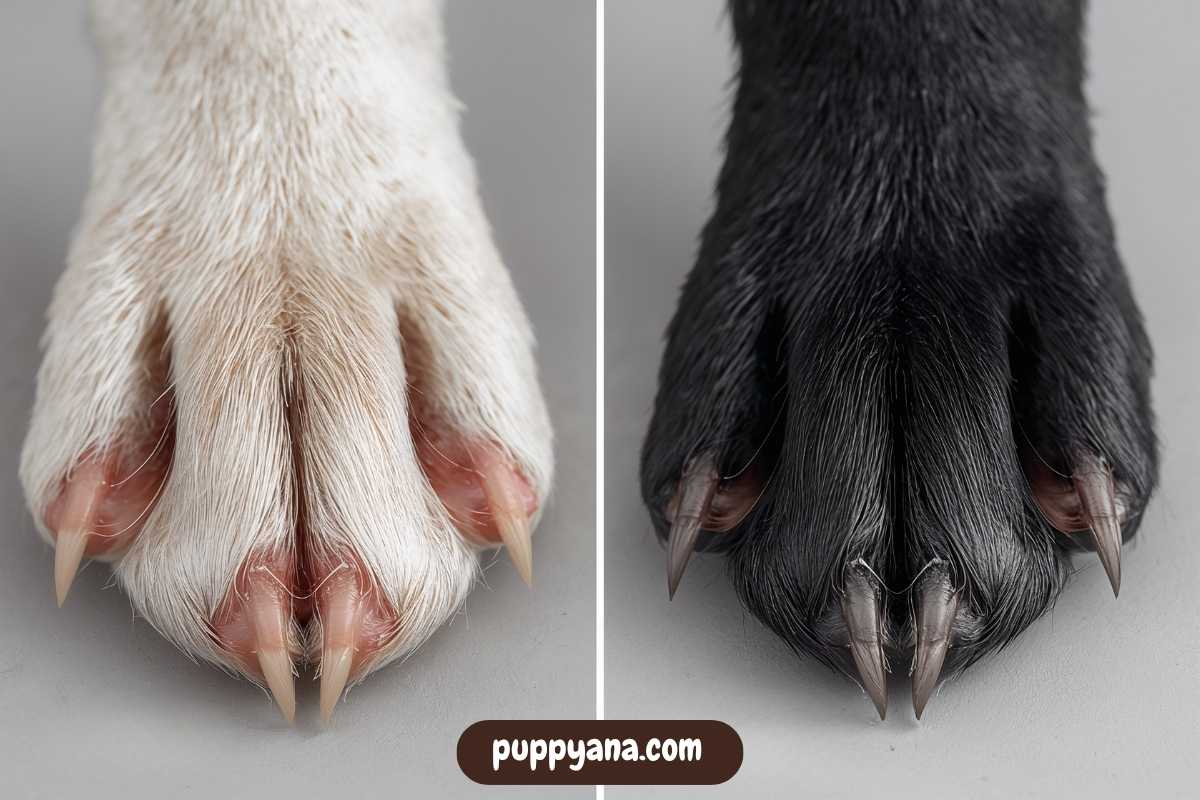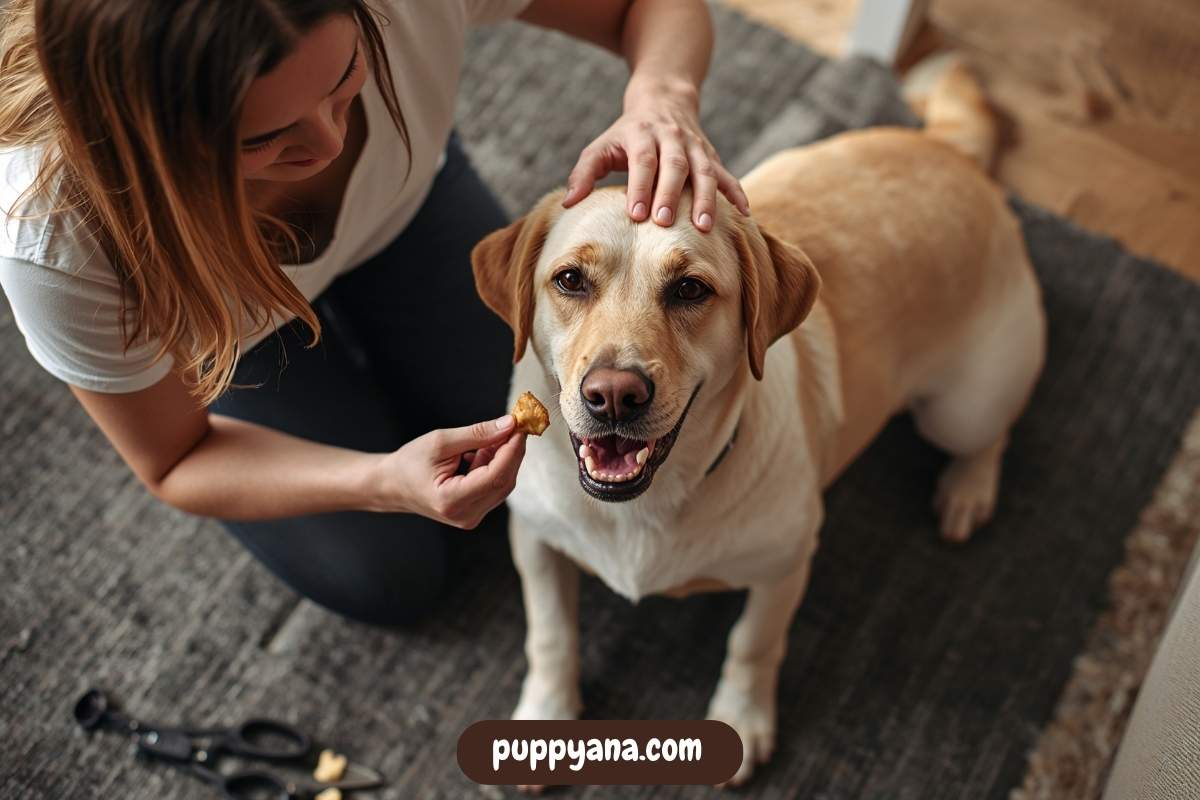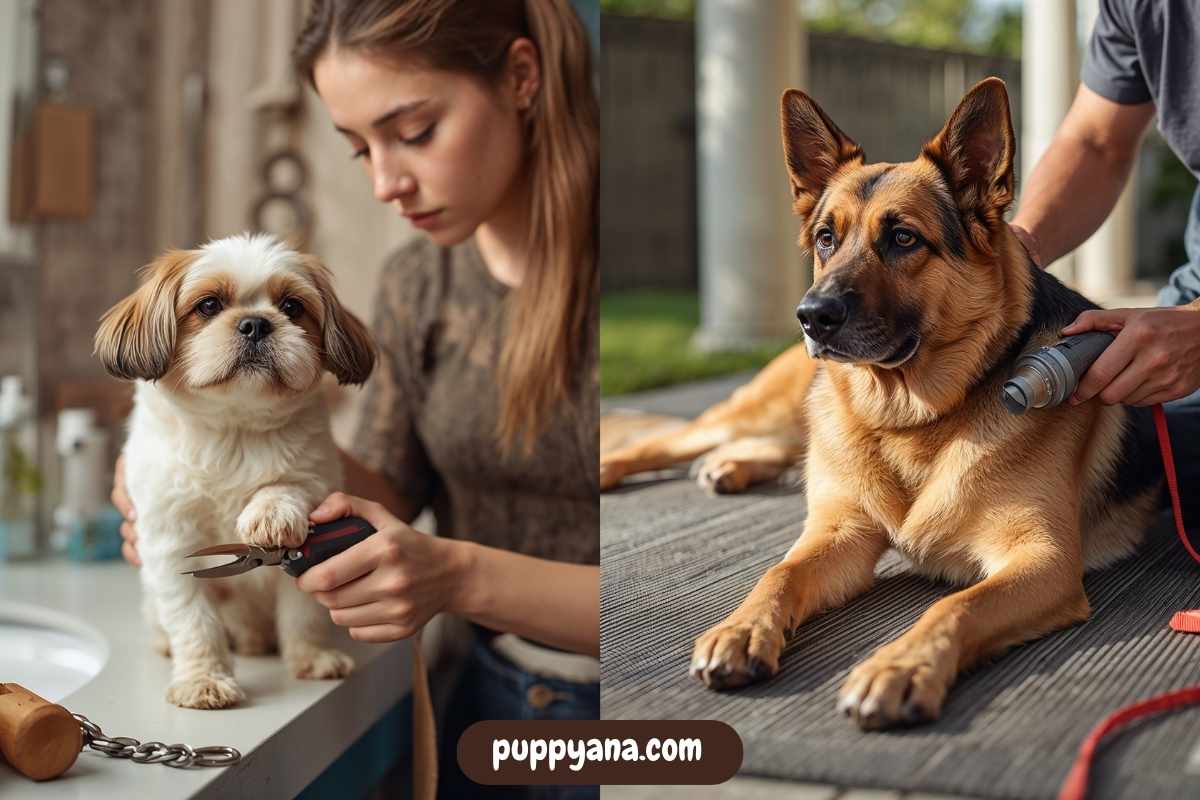If you’re wondering whether you can learn how to cut dog nails at home, the answer is yes—you absolutely can. And you don’t need to be a professional groomer to do it safely and confidently.
I remember the first time I tried trimming my dog’s nails. I was nervous, my dog was wiggly, and I was certain I’d hurt her. But over time, I picked up the right tools, techniques, and timing—and it became a simple part of our routine. Today, we’re going to walk through exactly how you can do it too, even if you’ve never held a pair of clippers before.
Regular nail trims are more than just cosmetic. Overgrown nails can lead to joint issues, posture problems, and unnecessary pain. When dogs walk with long nails, they compensate in ways that place extra stress on their skeleton over time. That’s why learning how to trim their nails at home is not just a convenience—it’s essential care.
Let’s break it down into manageable, dog-approved steps.

Table of Contents
ToggleWhy Nail Trimming Really Matters for Dogs
Your dog’s nails aren’t just there to click across the tile floor. When they get too long, bad things start to happen:
- Nails press into paw pads and cause pain
- Dogs adjust their gait, which can harm their joints and spine
- Overgrown nails can crack or split
- Long nails can snag in carpet or outdoor surfaces, risking injury
According to the ASPCA, keeping your dog’s nails short helps prevent long-term mobility issues and contributes to overall comfort, no matter their age.
That means a nail trim is much more than grooming—it’s preventative health care.
Tools You’ll Need to Cut Dog Nails at Home
Before you start, gather all the essentials. Having everything ready keeps the session stress-free for both of you.
Must-Have Tools:
- Dog Nail Clippers: Scissor-style for large dogs or guillotine-style for smaller breeds.
- Styptic Powder or Cornstarch: Helps stop bleeding if you accidentally cut the quick.
- High-Value Treats: Reinforces a positive experience.
- Towel or Non-Slip Mat: Prevents sliding and keeps your dog stable.
- Dog Nail File or Grinder (optional): Use it after clipping to smooth rough edges.
Some people prefer electric nail grinders, which offer more control and are less likely to cut too deep. However, dogs new to grinders may need extra time to adjust to the vibration and noise.
Looking for a full guide on tools and techniques? The American Kennel Club offers a helpful resource you can bookmark for reference.
How to Cut Dog Nails at Home in 7 Steps
Learning how to cut your dog’s nails at home gets easier the more you practice. These steps are what I use with my own dog and are widely recommended by professionals.
Step 1: Get Your Dog Used to Paw Handling
Before even picking up the clippers, start by gently touching and holding your dog’s paws regularly—during cuddles, after walks, or while watching TV. Reward them for letting you touch between the toes and around the nails.
This simple habit desensitizes them to the idea that paw touches are nothing to fear.
The Humane Society strongly advises using patience and never forcing grooming tasks when the dog is clearly afraid.
Step 2: Choose the Best Time to Trim
Pick a calm, relaxed time—after eating or after exercise, when your dog is less energetic. Try to trim nails when sunlight is available, or use a bright lamp so you can clearly see what you’re doing.
Routine also helps. If you make nail trimming part of your dog’s usual care time, it becomes just another moment of bonding.
Step 3: Locate the Quick
The “quick” is the sensitive part of the nail filled with blood vessels and nerves. It appears pink in white nails, and it’s harder to see in dark nails.
For dogs with black nails:
- Trim small slivers at a time
- Look from underneath for a lighter grey oval shape in the middle—this signals you’re getting close to the quick
Never rush, and if you’re unsure, stop. It’s better to trim a little less than too much.

Step 4: Clip at a 45-Degree Angle
Hold your dog’s paw gently but firmly. Angle the clippers at 45 degrees, away from the paw.
Clip the tip off the nail—just the part that curves downward. Avoid squeezing the toes or tugging at fur while doing it.
It’s okay to start by trimming just one or two nails a day while you both gain confidence.
Step 5: Use a File or Grinder to Finish the Nail
After clipping, some nails may feel jagged or scratchy. A dog nail file or electric grinder can smooth out the edges.
If your dog is sensitive to the buzzing of a grinder, let them sniff it and hear it before using. Gradual exposure is key here, especially for puppies.
I recommends rewarding your dog at every stage to build strong, positive associations with the grooming process.
Step 6: Praise and Reward Immediately
Dogs live in the moment. That’s why positive reinforcement works so well.
After trimming each paw—or even just one nail—offer plenty of praise and a high-value treat. You’re teaching your dog that nail trims lead to rewards, not punishment.
Suddenly, the clippers won’t seem so scary.

Step 7: Stop if You Hit the Quick (And Don’t Panic)
If you accidentally clip too close and cause bleeding:
- Stay calm so your dog stays calm
- Apply styptic powder or press cornstarch against the nail tip
- Praise your dog for letting you help
- Finish the rest another day if needed
Bleeding usually stops in under a minute, although dogs with thin or brittle nails may be more prone to quick injuries.
How Often Should You Cut Dog Nails?
On average, dogs need a nail trim every 3 to 4 weeks. But frequency can vary based on your dog’s lifestyle and breed.
| Dog Type | Nail Growth Speed | Suggested Trim Frequency |
|---|---|---|
| Indoor dogs | Fast | Every 3 weeks |
| Outdoor/active dogs | Slower | Every 4–6 weeks |
| Puppies | Fastest | Every 2–3 weeks |
| Senior dogs | Moderate | Every 3–4 weeks |
Use the “click test”: if you can hear nails tapping on hard floors, it’s time for a trim.
Nail Clippers vs. Grinders—Which Is Better?
Some dog owners fear cutting the quick, so they opt for grinders. Others prefer the simplicity of clippers. Here’s a quick breakdown:
| Feature | Nail Clippers | Nail Grinder |
|---|---|---|
| Speed | Fast | Slower |
| Control | Moderate | High |
| Noise | Silent | Noisy |
| Smoothing | No | Yes |
| Fear Factor | Low-medium | Medium-high if unfamiliar |
If your dog is anxious, start slow and let them sniff or hear the tool before using. Gradual introduction builds confidence, as shown in this helpful guide from Preventive Vet.

What If Your Dog Is Terrified of Nail Trims?
Some dogs shake, run, or hide the moment they spot the clippers. That’s okay. These techniques help:
- Desensitize slowly—bring out the clippers daily without trimming
- Use lick mats with peanut butter to distract during the session
- Trim one nail at a time to reduce stress
- Try calming supplements (ask your vet)
- Take breaks and try again later if things escalate
As ASPCA experts note, the goal is to make nail care a bonding time, not punishment. For sensitive dogs, you may need several sessions just to get through one paw—and that’s perfectly fine.
When to See a Groomer or Vet Instead
You should avoid at-home trimming and speak to a vet or groomer if:
- Your dog’s nails are extremely overgrown or curled
- You’ve cut the quick more than once
- Your dog is extremely reactive or aggressive when handled
- Nails are split, cracked, or infected
Letting professionals handle more difficult cases ensures your dog is safe and calm. Even those of us who regularly do nail trims at home often rely on vets for trims when necessary.

Conclusion
Learning how to cut dog nails at home might take a bit of trial and error, but with patience and the right approach, you can absolutely master it.
Trimming your dog’s nails doesn’t have to be a battle. When done properly, it’s a simple, regular grooming task that keeps your dog healthy and pain-free. And once your dog associates trims with treats, calm energy, and love—it becomes just another way you show you care.
Stick with it, listen to your dog’s reactions, and don’t be afraid to spread the trimming out over a few days. With every cut, you’re not just trimming nails—you’re building trust.
Frequently Asked Questions
How do I know if my dog’s nails are too long?
If you hear clicking on hard floors or see nails curling sideways, they’re likely too long.
Can I use human nail clippers on my dog?
It’s not recommended. Dog nails are thicker and shaped differently. Use proper pet clippers for clean, safe cuts.
Is it bad if I cut the quick?
It can bleed and cause temporary pain, but styptic powder or cornstarch can stop the bleeding quickly. Avoid it next time by trimming in small slivers.
How can I calm my dog during nail trims?
Use peanut butter, calming supplements, low lighting, and soft music. Gradual training and positive reinforcement help most.
Is walking enough to wear down dog nails?
Sometimes. But walks usually aren’t enough for most dogs, especially small breeds or indoor dogs. Trimming is still needed.
How long does it take to train a dog to accept nail trims?
It varies. Some dogs adjust in a few sessions; others need weeks of positive association. Go at your dog’s pace.
Do all dogs need nail trims?
Yes. Even outdoor dogs may need trims—especially dewclaws, which don’t touch the ground and don’t wear down naturally.
Can I trim my dog’s nails while they’re asleep?
Only if your dog is comfortable and deeply relaxed. Sudden movements can startle them, so this only works for very calm dogs.





